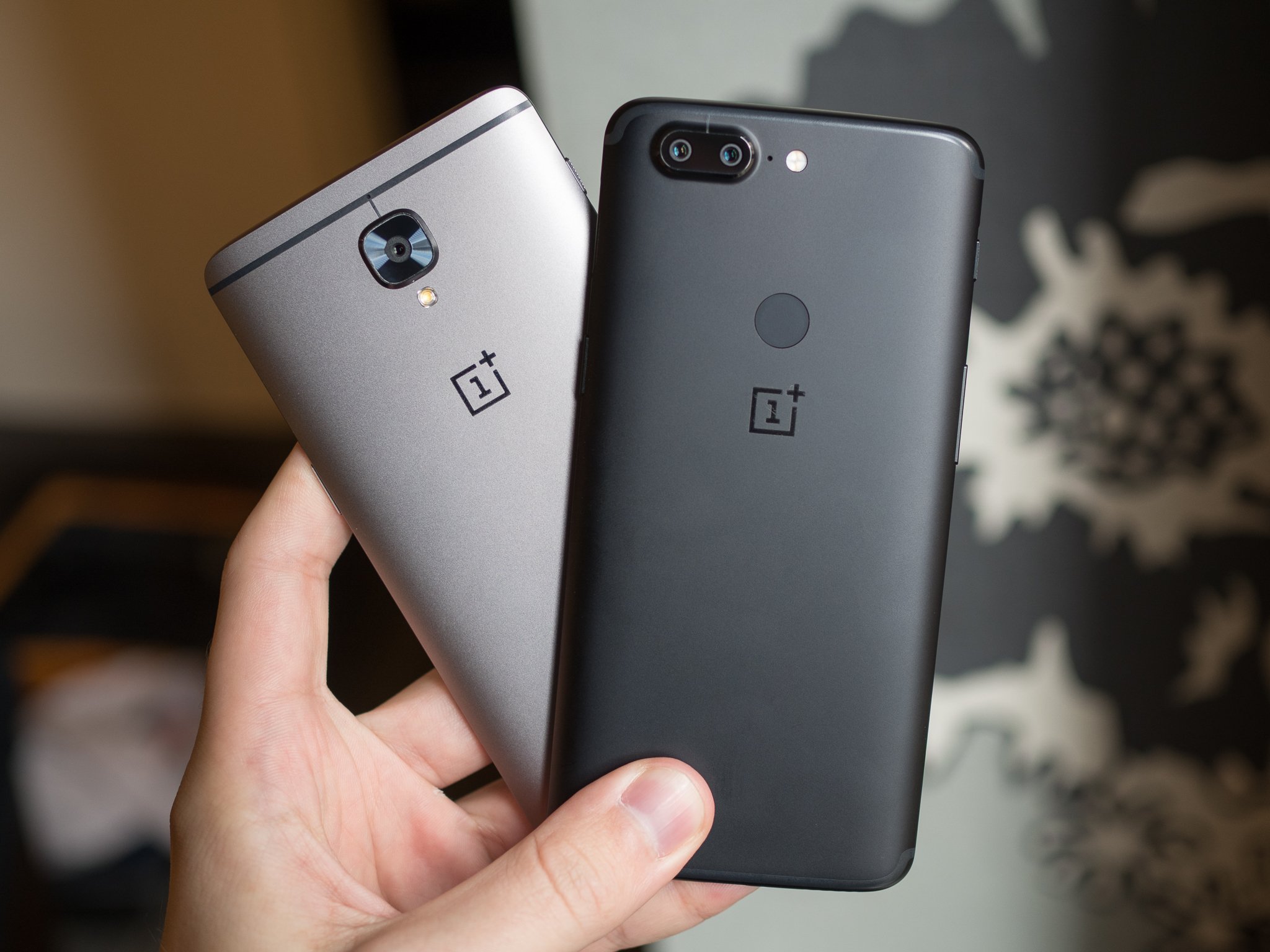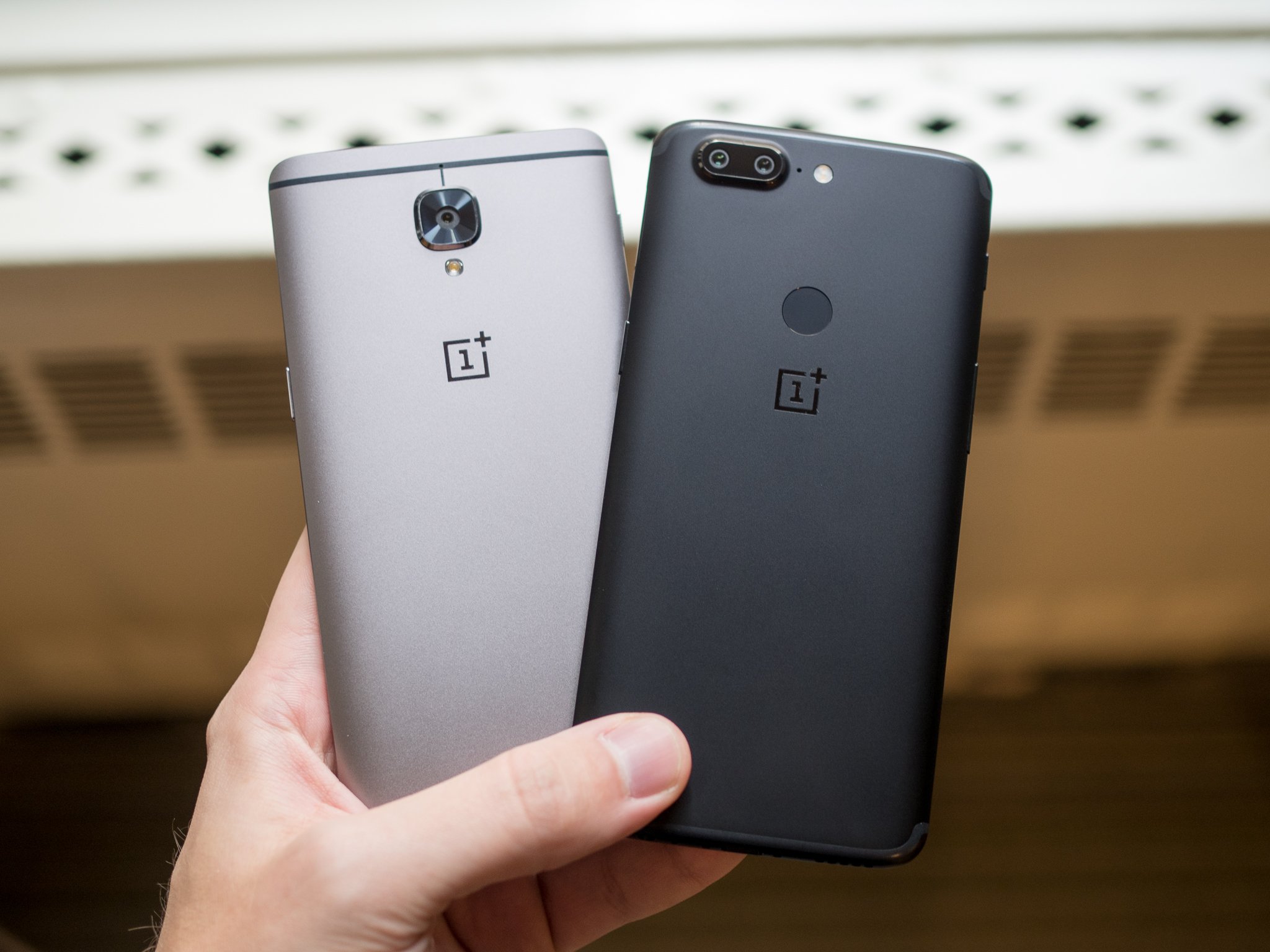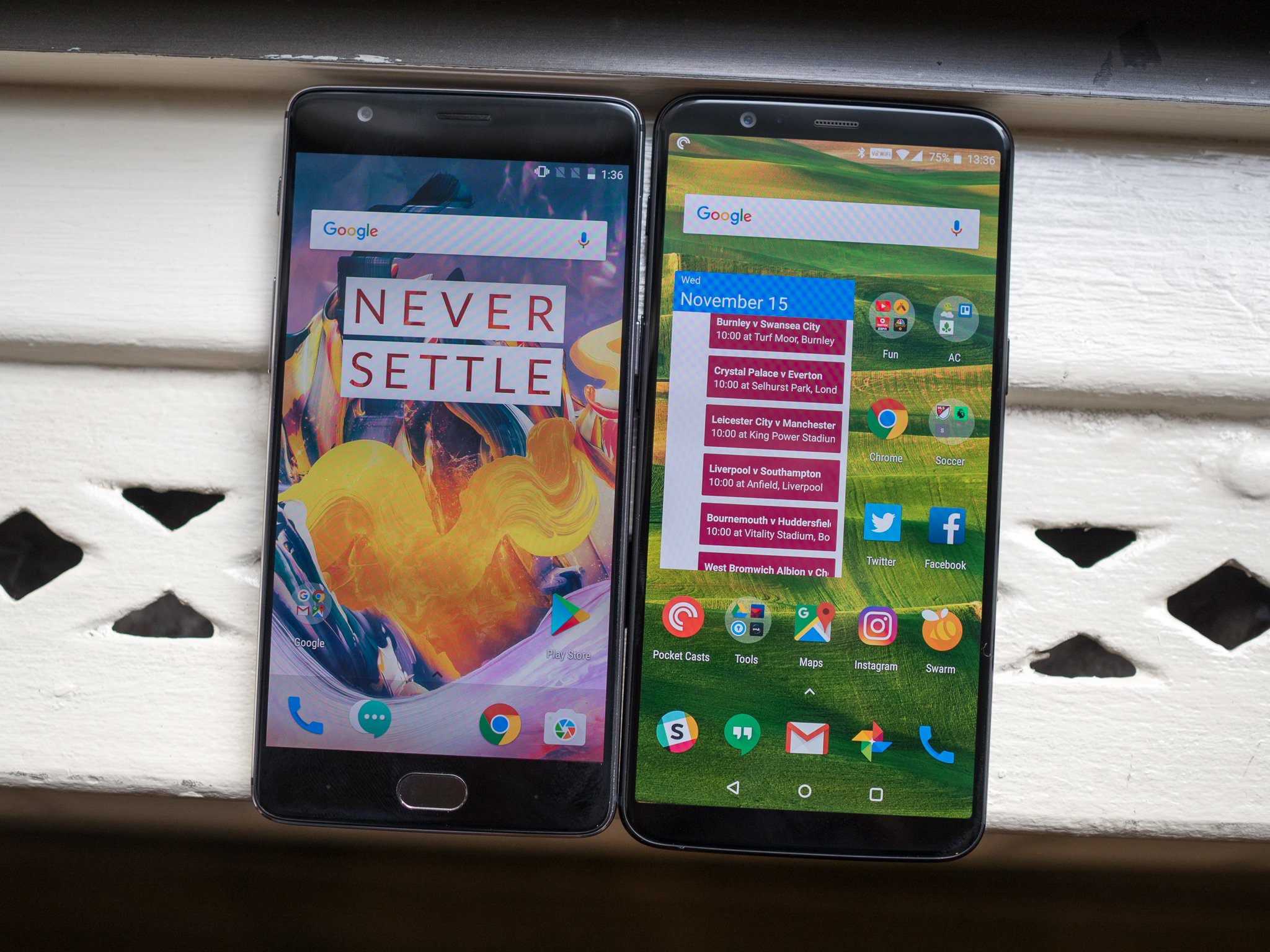The iterative march can make it tough to know when to upgrade.
The average OnePlus phone owner likely upgrades faster than owners of other brands, but even they have limits. Most won't drop the money to get a new phone every six months ... but jumping up every year is totally reasonable. With the release of the OnePlus 5T there are a whole lot of OnePlus 3T owners eyeballing this upgrade who understandably passed on the quick jump to the original OnePlus 5 while their own purchase was still nice and fresh. And there are probably many OnePlus 3 owners feeling the same way, not wanting to wait another half a year for whatever succeeds it.
Whether you're hanging onto a OnePlus 3 or the slightly upgraded 3T, we want to give you the information you need to know if the OnePlus 5T is a worthy upgrade at $499.
What's the same
OnePlus has held a pretty amazing consistency in its flagships from the original OnePlus One up to today's 5T. Though the exterior of the OnePlus 5T looks quite different from the 3 or 3T, the core experience of using the phone hasn't changed all that much. Android 7.1 Nougat on the OnePlus 3 and 3T is near-identical to what ships on the 5T, and all three phones are slated for the Android 8.0 Oreo update by the end of 2017.
The core experience of using the phone hasn't changed much from the OnePlus 3 to the 5T.
Performance, too, is extremely consistent between the phones. Though the OnePlus 3 may seem "old" to phone nerds, its Snapdragon 820 processor and 6GB of RAM are more than capable of pushing this nimble OxygenOS software and all of the latest apps at nearly the same pace as a Snapdragon 835 and (potentially) 8GB of RAM on the latest OnePlus 5T.
Beyond the software being displayed on the screen, the core hardware experience hasn't changed much either. We'll talk about the design changes below, but when you think about the basic hardware features — like ports, buttons, speaker, radios, etc. — you'll find few discrepancies between the previous generation and the latest. Again, it's worth remembering that even the OnePlus 3 isn't particularly old at this point, and when it was released it had most of the latest and greatest internals — they've aged well.
What's different
The most obvious difference with this upgrade is the change of hardware design. OnePlus is using the same simple, solid and efficient hardware in the 5T as it did back with the 3, but it's much more sleek and refined in 2017. The OnePlus 5T has a bit more character, more polish and more style when set next to the generic-looking OnePlus 3. The feel isn't much different between the two, but looks are important.
There's no doubt the OnePlus 5T feels like a far more 'modern' phone.
The same goes with the view from the front, where the 6-inch 2:1 display on the OnePlus 5T just feels more modern compared to the larger bezels surrounding a 5.5-inch 16:9 display on the older phones. And it isn't just for looks: you get the benefit of more usable screen space in effectively the same package, too, and the fingerprint sensor is just as usable on the back of the phone. The Optic AMOLED display panel itself isn't notably improved from last year, but getting more of it in the same basic package is a win-win.
We've established that the OnePlus 5T doesn't necessarily have a huge lead in terms of performance today compared to the older phones, but its newer specs certainly give it a longer runway into the future. The Snapdragon 820 holds up just fine today, but how about in another year? It won't feel the same as the 5T's Snapdragon 835. And that brings up a larger point about the future of software on these phones: the OnePlus 3 and 3T are likely done with official software support following the Oreo update, while the 5T will see at least the "P" release in 2018.
The 5T's specs aren't game-changing today, but they will help a ton going forward.
The one clear point of differentiation in terms of specs and their actual effect on your daily use right off the bat will be when talking about battery. The OnePlus 3's 3000mAh capacity is of course 10% smaller than the 5T's 3300mAh, but the newer phone also has a much more efficient processor on board to make better use of it. That's a real-world improvement you'll see in battery life day after day. Now when talking about the OnePlus 3T with its 3400mAh capacity, you won't see much of a difference — you can't argue with that extra capacity.
The camera comparison between these phones is a bit of a mixed bag as well. You can quite easily argue that the OnePlus 5T's newer sensor, secondary lens for low light and Portrait Mode as a complete package is better overall than the single 16MP camera on the OnePlus 3 and 3T. But in many shooting conditions that old camera — with its optical image stabilization — is going to do an admirable job that'll compare favorably to the OnePlus 5T. Yes the newer phone has more features, but in terms of raw shot-to-shot photo quality OnePlus just hasn't made massive strides in the last year.
Should you upgrade?
As you can see, OnePlus hasn't made huge improvements in features or performance when comparing the OnePlus 5T to even the original OnePlus 3. But that really is more of a testament to how well the OnePlus 3 has held up over time than the OnePlus 5T being unattractive on its own. OnePlus takes a relatively conservative approach, and isn't particularly willing to throw out features or specs with the new phone — it instead refines in some areas and adds in others to give you a better phone with each generation.
This isn't a 'sure thing' sort of upgrade, but you can find reason for it — and it may not be expensive.
When you look at things this way, it's easy to say that your can be happy with your OnePlus 3T or even OnePlus 3 at the end of 2017, choosing to not drop the extra money on a new OnePlus 5T that isn't a substantial upgrade. Yes the hardware is nicer, the screen is larger and the specs give you more runway for the future; but today you'll get almost the same experience using a OnePlus 3 as you do on the OnePlus 5T.
The one thing making this upgrade decision interesting is how well OnePlus phones seem to hold their value on the used market. Browsing OnePlus listings on popular trade site Swappa shows OnePlus 3s still selling for over $200, and 3Ts often snagging upwards of $300. That's a solid return on a phone that's at least a year old, and gets you about half way toward your new OnePlus 5T, should you decide to upgrade.
If you're willing to sell on your OnePlus 3 or 3T, you can hop onto the latest and greatest from the company for what comes out to a modest investment. And in doing so, you're getting a phone with a longer runway into the future and the same great day-to-day OnePlus experience you already know and love.



0 Response to "You Can See More: OnePlus 5T vs. OnePlus 3T: Should you upgrade?"
Post a Comment